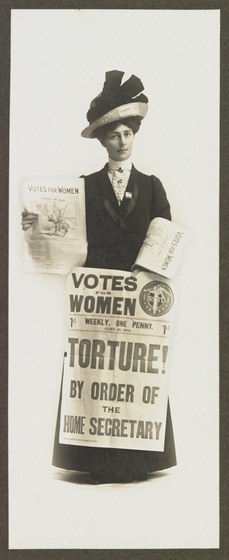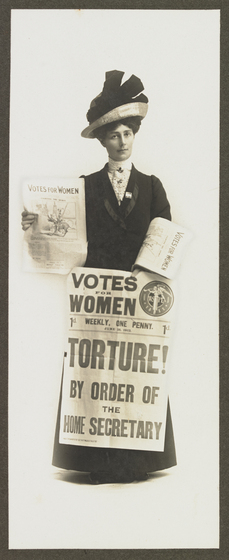The Women's Movement During the War
Women’s movements were amongst the earliest and strongest opponents of militarism and conscription in Australia. The anti-conscription campaign was arguably the first time that women entered the public stage in Australia in a significant way in their own right.
Chief amongst these movements were the Women’s Peace Army, led by Vida Goldstein. This was formed in 1915 as an explicitly anti-war offshoot of her political organisation, the Women’s Political Association. Even earlier than this, Vida Goldstein was one of the founders of the Australian Peace Alliance in October 1914, along with trade unionists (including John Curtin), the Victorian Socialist Party and some radical Christians.
Other prominent members of the Women’s Peace Army were Adela Pankhurst and Cecelia John.
The WPA formed branches in other Australian cities as well: Margaret Thorp and Emma Miller in Brisbane were particularly effective. During the war, the WPA had a particular focus on the economic effects of war. They campaigned for price controls on food, ran an unemployment bureau for women at their headquarters, and established a farming cooperative at Mordialloc.
There were also other women’s peace organisations besides the WPA: The Sisterhood of International Peace (which later became WILPF, the Women’s International League for Peace and Freedom) was formed in 1915 as an offshoot of the socially-conscious Australian Church. Eleanor May Moore was the main organiser for the SIP. Moore was also active in the Australian Peace Alliance.
A number of these groups, and others such as the Victorian Socialist Party, worked together to organise the United Women's No Conscription Demonstration on 21 October, 1916.
Not all women opposed the war. For many mothers, supporting their sons to go to war was the greatest sacrifice they could make for their country, and thus a duty. The stories of such women were featured prominently in many of the major newspapers, all of which supported the war effort and conscription.
Even the anti-war women’s movements included many differences before, during and after the war. Goldstein founded the Women's Peace Army as a separate body from the Women's Political Association because she knew that many more conservative supporters of the latter were in favour of the war effort. Even the SIP had a more middle-class, and non-confrontational outlook than the WPA.
On the other hand, some women activists felt that a focus on women's issues was too narrow. Brunswick teacher and school principal Bella Lavender had been a member of the Women's Political Association and a major worker for Goldstein’s Senate candidacy in 1910. However by 1913, she had left the WPA believing that socialist and labor politics were more important, and that the women’s movement should be just one part of this. Adela Pankhurst herself left the WPA towards the end of the war, for the same reason.


















